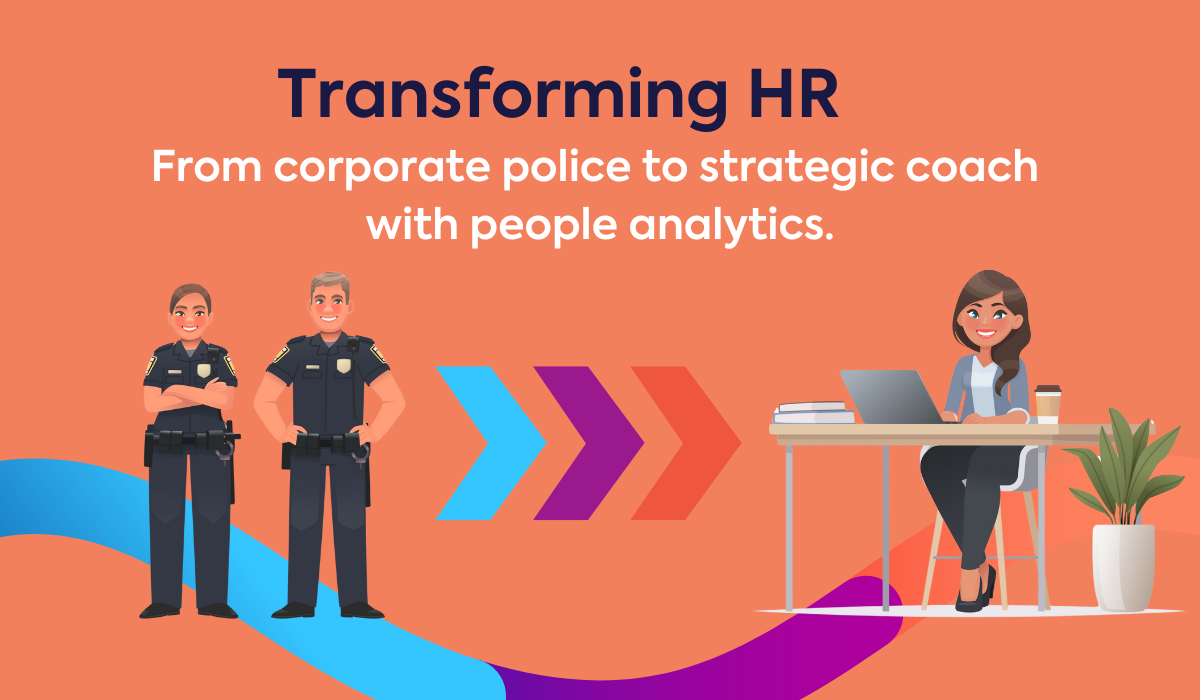5 Steps to Designing Your Organisation’s Culture
Last weekend, I attended a friend’s BBQ where we discussed sports and the country’s economic state, when inevitably the conversation turned to work....
Engage
|
Hire
|
Develop
|
Assure
|
|
Deeply understand your organisation with science-backed analytics on your culture, team design, and engagement. |
Automatically match to candidates who are a great fit for your team culture and who are intrinsically motivated to succeed. |
Back your onboarding, compliance and skill development with industry-leading credentialling, competency and capability expertise.
|
Reimagine skills assessment and certification with dedicated tools designed to elevate your competency frameworks.
|
.png?width=383&height=200&name=team%20(1).png)
7 min read
 Rudy Crous
Oct 8, 2024 2:25:31 PM
Rudy Crous
Oct 8, 2024 2:25:31 PM

As CEO of Compono, I’m a firm believer that it’s simply not enough for me and my team to focus only on building intelligent software. It is also important that we contribute to the existing body of academic work within the field of Organisational Psychology.
Being at the forefront of empirical research and working with reputable institutions allows us to stay ahead of the competition and ultimately ensure that we continue to build cutting-edge technology that leaves direct, positive impacts on the world of work.
For me, it’s always been important to build viable solutions that help to drive real change in people’s work lives.
In a recent project I did with two prominent Australian Universities, we set out to develop a safety culture maturity framework specifically designed for application within companies that operate in safety-critical industries like mining, construction, manufacturing, and logistics.
Safety and operational risk management have always been a passion of mine, as the effects of getting it wrong in these types of industries often spell disaster for individuals, companies, and the greater community; think of the Event Horizon and BP oil spill in the Gulf of Mexico or the Chernobyl nuclear disaster or pretty much every episode of Air crash Investigations.
However, getting it right also has massive payoffs –
research shows that organisations that effectively manage their safety make the most profit over time (Hudson, 1999).
Organisations operating in high-risk industries have an obligation to ensure, in so far as is reasonably practicable, the health and safety of all workers and the community in which it operates. An organisation’s safety culture is seen as a key mechanism towards managing safety outcomes. In one of my previous articles, I described organisational culture as, “who and what we are, what we find important, and how we go about doing things around here” (Hudson, 1999).
Safety culture is a special type of organisational culture, one in which safety is understood to be, and is accepted as, the top priority.
It refers to the ways in which safety is managed in relation to all other business priorities. And when measured effectively, it can act as a lead indicator that provides vital insight into the state of safety within an organisation. This is seen as distinct from lagging indicators like accidents, as it offers knowledge about safety without the need for retrospective analysis of negative outcomes.
Research on safety culture has mostly focused on defining the characteristics of a positive culture, including describing what a ‘good’ or ‘bad’ safety culture looks like and how to spot the difference between the two.
While useful in outlining the construct, the research is descriptive in nature and does not operationalise it or provide a framework for empirically measuring safety culture. Consequently, there is a lack of empirical data on what constitutes a ‘good’ safety culture and how it relates to improved organisational safety related outcomes (Cox & Cox 1996).
While safety culture is considered a means for ensuring high levels of safety performance, there is a limited understanding in terms of how safety cultures can develop and evolve over time and how different levels of culture maturity are associated with safety performance outcomes and behaviour expectations (Westrum, 1997; Reason, 1997; Hudson, 2001; Lawrie et al., 2006).
The current research project set out to design and validate a framework for the development and maturation of organisational safety culture within the Maritime industry.
The aim of this research was to move the agenda away from the rhetoric about the importance of safety culture, and more towards understanding how the concept can be operationalised to create safer and more productive work environments, ultimately aiding organisations in their quest to better understand the link between safety culture and safety performance and helping them promote workplace discussions about safety goals and aspirations.
This will help bridge the gap between the policy makers who espouse the importance of safety culture and the practitioners charged with implementing such a culture, yet find it a problematic concept to understand, engage with, and improve.
We performed a thorough literature review and identified nine dimensions that formed the basis of our safety culture framework.
The first six dimensions describe the systems and processes used for managing safety. The last three dimensions deal with the human elements responsible for motivating safe behaviour.
We used 5 levels or stages of maturity, ranging from pathological to generative, to evaluate maturity across the dimensions.
Organisations operating at the Pathological stage consider safety as a problem caused by workers. Here, the main drivers are the business and a desire not to get caught by regulators. A company that has a pathological set of values does not care about meeting its legal obligations for health and safety.
At the Generative stage of safety culture maturity, there is active safety participation at all levels of the organisation. Safety is considered an inherent part of the business and organisations operating at this stage are characterised by chronic unease as a counter to complacency.
A company that has a generative set of values genuinely cares for workers’ health and safety. In addition to safety culture maturity, we evaluated a range of preconditions and safety outcome measures.
The research sample consisted of employees from 195 different companies across 52 nationalities in the Maritime industry.
Looking at the research model in Figure 1, we found the following:

This research is one of the first of its kind to test a safety culture maturity model and outline how safety culture is linked to organisational influences, safety preconditions, and specific safety outcomes.
The model shows how safety culture maturity can be measured and communicates the benefit to companies that have a mature safety culture.
This research project is important for Compono, as we aim to include this safety culture maturity model as part of our suite of assessments for companies operating in safety critical industries. In addition to helping these companies evaluate their own culture maturity, we will also provide them with a way to evaluate the maturity level of their safety culture, relative to other companies in the same industries.
Does your company operate in a safety critical industry?
Compono can help you evaluate your culture and manage your people risks.
Get in touch to find out more.

Get the science-backed insights of a corporate psychologist, without needing to be one. 😉
American Bureau of Shipping. (2012). Guidance notes on safety culture and leading indicators of safety. Houston, TX.
Bate, P. (1992). The impact of organisational culture on approaches to organisational problem solving. In: Salaman, G. (ed.), Human Resources Strategies. Sage, London.
Butt, N., Johnson, D., Pike, K., Pryce-Roberts, N., & Vigar, N. (2013). 15 Years of Shipping Accidents: A review for WWF Southampton Solent University.
Civil Aviation Safety Authority. (2012). SMS for aviation–a practical guide resource kit. Canberra, ACT: Civil Aviation Safety Authority.
Cooper, M. D. (2000). Towards a model of safety culture. Safety Science, 36 (2), 111-136.
Cox, S., & Cox, T. (1996). Safety, Systems and People. Oxford: Butterworth-Heinemann.
Deal, T.E., & Kennedy, A.A. (1982). Corporate Cultures: The Rites and Rituals of Corporate Life. Penguin Books. Harmondsworth.
Dismukes, R.K., McDonnell, L.K., & Jobe, K.K. (2000). Facilitating LOFT debriefings: Instructor Techniques and Crew Participation. International Journal of Aviation Psychology, 10, 35-58.
Donald, I., & Canter, D. (1993). Psychological factors and the accident plateau. Health and Safety Information Bulletin, 215, 5-12.
Donald, I., & Canter, D. (1994). Employee attitudes and safety in the chemical industry. Journal of Loss Prevention in the Process Industries, 7, 203-208.
Grinn, M.A., & Hu, X. (2013). How leaders differentially motivate safety compliance and safety participation: The role of monitoring, inspiring, and learning. Safety Science, 60, 196-202.
Grote, G. (2012). Safety management in different high-risk domains – All the same? Safety Science, 50, 1983–1992
Guldenmund, F. W. (2000). The nature of safety culture: a review of theory and research. Safety Science, 34(1), 215-257.
Hale, A.R. (2000). Culture’s confusions. Safety Science 34, 1–14.
Harris, S. G. & Sutton, R. I. (1986). Functions of Parting Ceremonies in Dying Organizations. The Academy of Management Journal, 29 (1): 5–30.
Health and Safety Commission. (1993). Organising for Safety: Third Report of the Human Factors Study Group of ACSNI (Advisory Committee on the Safety of Nuclear Installations). Sudbury: HSE Books.
Hopkins, A. 2006. Studying organisational cultures and their effects on safety. Safety Science, 44(10): 875-889.
Hudson, P. (1999). Safety Culture – the Way Ahead? Theory and Practical Principles. Centre for Safety Science, Leiden University, Leiden.
Hudson, P. (2001) Aviation Safety Culture. Safeskies Magazine
Hudson, P. (2007). Implementing a safety culture in a major multi-national. Safety Science, 45 (6), 697-722.
International Shipping Federation. (2013). Safety Culture. London, UK: Maritime International Secretariat Services Ltd.
Jones, D.G., & Endsley, M.R. (1996). Sources of situation awareness errors in aviation. Aviation, Space and Environmental Medicine, 67 (6), 507 – 512.
Karasek, R.A. (1979). Job Demands, Job Decision Latitude, and Mental Strain: Implications for Job Redesign. Administrative Science Quarterly 24 (2), 285-308
Kirk, S., Parker, D., Claridge, T., Esmail, A., & Marshall, M. (2007). Patient safety culture in primary care: developing a theoretical framework for practical use. Quality & Safety in Health Care, 16 (4), 313-320.
Lloyd, C. 2010. Assuring the competence of asset management staff. In Asset management, whole-life management of physical assets, ed. C. Lloyd London: Thomas Telford
Lu. C.S., & Tsai, C.L. (2010). The effect of safety climate on seafarers’ safety behaviors in container shipping. Accident Analysis and Prevention, 42, 1999–2006
Mason, P., (1993); cited in Wiegmann, D. & Shappell, S. (2003). A human error approach to aviation accident analysis: The human factors analysis and classification system. Aldershot, Great Britain: Ashgate Publishing Company.
Nagel, D. (1988). Human error in aviation operations. In E. Wiener and D. Nagel (eds.), Human factors in aviation (pp. 263-303). San Diego, CA: Academic Press.
O’Hare, D. (2006) Cognitive Functions and Performance Shaping Factors in Aviation Accidents and Incidents. International Journal of Aviation Psychology, 16 ( 2), 145-156
Parker, D., Lawrie, M., & Hudson, P. (2006). A framework for understanding the development of organisational safety culture. Safety Science, 44 (6), 551-562.
Pidgeon, N. (1991). Safety culture and risk management in organizations. Journal of Cross-Cultural Psychology, 22(1).
Reason, J. (1997). Managing the risks of organisational accidents. Aldershot: Ashgate.
Reason, J. (1998). Achieving a safe culture: Theory and practice. Work and Stress, 12(3), 293-306.
Sanchez, P. (2004). De@ning Corporate Culture. Communication World, 18
Senders, J., & Moray, N. (1991). Human error: Cause, prediction and reduction. Lawrence Erlbaum Associates, Hillsdale, New Jersey.
Schein, E. H. (1992). Organizational culture and leadership ( 2nd ed.). San Francisco: Jossey-Bass.
Shook.R.W.C, Bandiero M, Coello.J.P. Garland.FD.J, & Endsley.M. (2000) Situation Awareness Problems in General Aviation. Proceedings of the 14th Triennial Congress of the International Ergonomics Association and the 44th Annual Meeting of the Ergonomics and Human Factors Society.
Sneddon, A., Mearns, K. & Flin, R. (2006). Safety and situation awareness in offshore crews. Cognition, Technology and Work, 8 , 255-267.
Thompson, N., Stradling, S., Murphy, M., & O’Neil, P. (1996) Stress and organisational culture. British Journal of Social Work, 26, 647-665
Weick, K.E., (1985). The significance of corporate culture. In Frost, P., Moore, L. F., Louis, M. R., Lundbert, C.C., & Martin, J. (Eds.), Organisational culture. Newbury Park, CA: Sage
Westrum, R. (1993). Cultures with requisite imagination. In J. Wise, P. Stager, & J. Hopkins (Eds.), Verification and Validation in Complex Man-Machine Systems. New York: Springer.
Westrum, R., 2004. A typology of organisational cultures. Quality and Safety in Health Care, 13 (Suppl II), ii22–ii27
Wiegmann, D. & Shappell, S. (2003). A human error approach to aviation accident analysis: The human factors analysis and classification system. Aldershot, Great Britain: Ashgate Publishing Company.
Yule, S. (2003). Senior Management Induence on safety performance in the UK and US energy sectors. Doctoral thesis, University of Aberdeen, Scotland
Zohar, D., & Luria, G. (2005). A Multilevel Model of Safety Climate: Cross-Level Relationships Between Organization and Group-Level Climates. Journal of Applied Psychology, 90(4), 616-628

Last weekend, I attended a friend’s BBQ where we discussed sports and the country’s economic state, when inevitably the conversation turned to work....

Organisational culture and employee engagement don’t just shape your business; they define its success. Imagine a workplace where employees feel...

Over our working careers, many of us have come across the ‘brilliant jerks’ of the workplace. We all know these individuals – they are technically...

Culture is the lifeblood of any organisation. From shaping employee behaviours to syncing teams toward a shared goal, a strong organisational...

1 min read
“You don’t have people problems until you get HR”. Ouch! Can you believe that I've heard this from some business owners and execs? Let's shine a...

If you're an HR leader or business decision-maker focused on creating high-performing teams, you've likely encountered both Culture Amp and Compono....